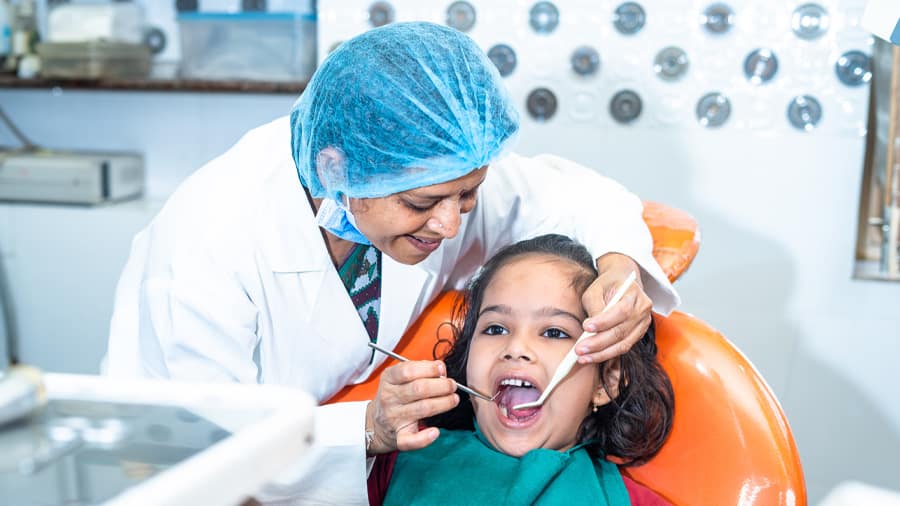-
-

TEETH WHITENING
What Is Stannous Fluoride Toothpaste?Stannous fluoride toothpaste helps prevent cavities, reduce sensitivity, fight plaque, and support daily gum and enamel health.

Selecting Dental Products
Best Toothpaste in India: Five Dentist-Recommended TypesToothpastes today are formulated to meet your every dental need and come in many flavours. Have your dental professional suggest the best toothpaste in India.
-
Science & Innovation
- ORAL HEALTH CHECK
- PRODUCT MATCH
- Colgate® | Toothpaste, Toothbrushes & Oral Care Resources
- Oral Health
- Infant & Kids Oral Care 101
- Bleeding Gums In Children: Should You Be Worried?


Are bleeding gums in children a cause for serious concern or nothing to worry about? For adults, gums that bleed during brushing or flossing may be a sign of gingivitis, the initial stage of gum disease. While gum infection and inflammation is common among adults, children can have similar problems as well. If you notice that your child's gums bleed easily, then give your family dentist a call. If there is a problem, the first step to successful treatment is a proper diagnosis from a dental professional.
Possible Causes of a Child's Gums Bleeding
Gingivitis is not the only potential cause of bleeding gums in children. According to the Indian Dental Association, bleeding can also occur as a result of improper flossing. Does your child floss every day? If he skipped a few days, then there may be some bleeding when he starts to floss again. Assist your child with flossing until he is old enough (around ten years of age) to clean really well between his teeth independently. A daily reminder will encourage good flossing habits among older kids. Daily flossing along with twice daily brushing is the formula for the prevention of gum disease at home.
Vigorous or hard brushing can also irritate gum tissue and lead to some bleeding. Gentle brushing with a soft-bristled toothbrush is enough to keep teeth clean. Encourage your child to spend two minutes brushing every tooth's surface as well as the tongue for a clean, healthy mouth.
Watching Out for Gum Disease
Bleeding caused by a change in flossing habits or a harsh brushing technique should clear up within a week once flossing becomes regular or your child switches to a soft-bristled brush. Bleeding gums, especially if accompanied by redness, tenderness, bad breath or a receding gumline, may be a sign of gingivitis or a more advanced stage of gum disease.
The Journal of Evolution of Medical and Dental Sciences notes that gingivitis is regarded as the most common periodontal disease in children. Older children are especially at risk; hormone changes during puberty can increase blood flow to the gums, making tissue more prone to swelling and tenderness. Brushing, flossing and regular dental appointments are central to the prevention and treatment of gingivitis.
Bleeding gums in children can certainly be an indicator of gingivitis. The earlier your child is evaluated by his dentist, the better. When overlooked or ignored, gingivitis can develop into more serious stages of gum disease, which can be difficult to reverse. Talk to your child's dentist if you notice that his gums bleed easily or other signs such as redness and swelling. Even if your child is healthy and has excellent oral care habits at home, it is still important to schedule regular dental check-ups as an aid to the timely detection of gum inflammation.
This article is intended to promote understanding of and knowledge about general oral health topics. It is not intended to be a substitute for professional advice, diagnosis or treatment. Always seek the advice of your dentist or other qualified healthcare provider with any questions you may have regarding a medical condition or treatment.
ORAL HEALTH QUIZ
What's behind your smile?
Take our Oral Health assessment to get the most from your oral care routine
2.3 billion
people worldwide suffer from tooth decay
ORAL HEALTH QUIZ
What's behind your smile?
Take our Oral Health assessment to get the most from your oral care routine
2.3 billion
people worldwide suffer from tooth decay
Related Articles

Dental visits
What Is A Paediatric Dentist?Visit Colgate now and learn about the difference between pediatric dentists and general dentists, and the benefits pediatric dentists provide.

Dental visits
What is a Pediatric Dentist?
Brushing and flossing
When to Start Using Toothpaste for Your BabyWhen should you start brushing my baby's teeth with toothpaste? Visit Colgate now and learn about the steps for keeping your baby's teeth in perfect condition.
Related Products

Helping dental professionals
More professionals across the world trust Colgate. Find resources, products, and information to give your patients a healthier future







